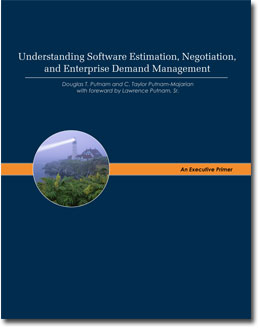Webinar: Best Practices for IT Portfolio Budgeting
IT budgeting is anything but simple, so why do so many organizations do it in an overly simplistic way? Instead of relying upon detailed task-based spreadsheets and wild guesses, IT budgeting should be leveraging historical data and predictive modeling. This webinar will discuss the business process and application of estimation to the challenges of building the annual IT budget. Presented by QSM's Larry Putnam Jr. on October 11 at 11:00 AM EST, this upcoming ITMPI webinar will focus on how this process can support the following aspects of portfolio management: Pipeline - Demand Management, Risk Management, Resource Management, or Financial Management. Larry will demonstrate how a macro-level estimation process can leverage the very basic information typically available early in the development cycle to generate release level budgeting information. He will then show how to aggregate the releases to provide portfolio level assessment and adjustments that will conform to business level constraints. This webinar will be useful for anyone involved in or responsible for building the annual IT budget.


